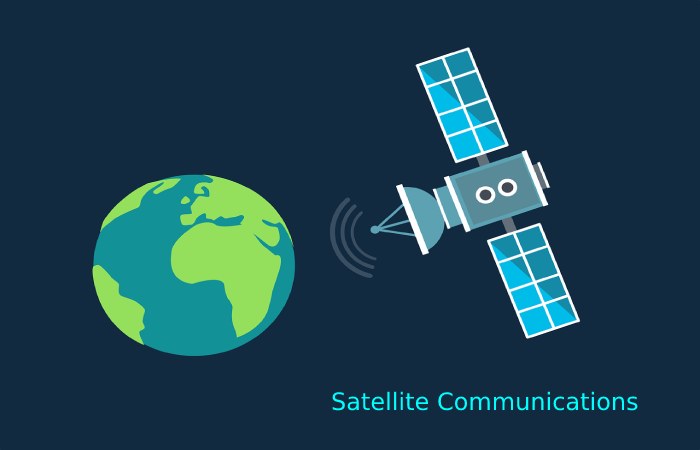Satellite communications are the use of satellite knowledge in the arena of communications. The services provided by satellite communications are voice and video calls, internet, fax, television, and radio channels.
A communications satellite. Is an artificial device in orbit in space used to create communication links? Meet various communication needs, including television transmission and communication with ships and aircraft. A communications satellite is primarily helpful in cases where terrestrial cables are inconvenient or impossible to use.
Satellite communications can provide communication capabilities that span long distances and operate under circumstances or conditions that are inoperable for other forms of communication. Satellites at an average altitude of 321.80 kilometres consider being in low orbit and high rotation those that reach distances of up to 35 880 kilometres above the surface. It is essential to point out that all devices must be above one hundred miles of altitude concerning the surface of the Earth so that the force of terrestrial gravity does not collapse them.
The satellites by ground stations receive their information, process it, and monitor the devices’ behaviour and orbit. Ground centres are generally not bulky facilities but relatively small, understaffed dashboards that control specialized geospatial functions.
Satellites with circular orbits remain more or less at the same distance from the Earth, but their position concerning the surface varies from moment to moment. It is the most common and well-known of the orbits. For their part, the satellites with elliptical orbits have the characteristic that they can spend more time looking at the same place on Earth, and their orbits are much longer.
Table of Contents
Characteristics of Satellite Communications:

- Satellites used in satellite communications are generally in geostationary orbit. Some of them place in highly elliptical orbits.
- One of the focal advantages of satellite communication is superior consistency, unlike other forms of communication. It does not need ground infrastructure for its operation.
- Satellite communication could provide superior performance as consistency and speed are much more pronounced than other forms of communication.
- Scalability is more significant in the case of satellite communications.
- The implementation cost is higher than most forms of communications in the case of satellite communications.
- Because it is less vulnerable than other forms of communication, it is used in defence departments.
- Satellite communications also provide weather information.
- It can be helpful in times of disaster as services rarely go down.
- A large amount of data is behaviour with the help of satellites.
Elements That Make Up The Satellite Communications System
- It constitutes the central point of the network, and its function is to establish communications between the various points in the area it serves. There can be more than one satellite in a system, one in service and another in reserve (which can be in orbit or on the ground), or one in service, another in orbit and a third on the floor. The position adopted will depend on the reliability to be obtained.
- Control centre. Also called TT&C (telemediation, remote control and control) controls the satellite from the ground.
- Earth station. It methods the link between the satellite and the terrestrial network connected to the system. Depending on the services provided, a system can operate with a few tens or hundreds of them.
Advantages And Disadvantages
A satellite is a simple radioelectric repeater and, as such, can be able to shut down any communications service. We highlight some advantages of these systems:
- Immediate and total coverage of large geographical areas, unlike the classic terrestrial systems, of slow implantation;
- possibility of becoming independent of distance and natural obstacles such as mountains etc.
The satellite’s privileged position in the geostationary orbit allows all stations located in the satellite’s coverage area simultaneous access to the system. The installation of a national satellite would fit with particular political axes of ARGENTINA, such as the administrative decentralization of State services, the so important in these times cultural integration of the different regions.
At the national level, a project of such importance would undoubtedly boost the country’s economy by improving production and promoting new industrial activities. Also, the Intelsat system does not provide aspects related to the military and national defence.
Space Segment Features
- Communications satellite: It is essential to make up of sets of radioelectric signal repeaters or transponders (a receiver, amplifier and transmitter) and support systems.
- Communications equipment, including antennas and repeaters, constitutes the satellite’s payload. Among the support systems, we can mention thermal control, energy system, structure, propulsion system, control system and stabilization system.
- TT&C Station: this second element has all the necessary equipment to keep the satellite in its orbital position, making it possible to carry out all the required operations from the ground. This station is located within the service area and owned by the satellite owner.
- It is essential to point out that all devices must be above one hundred miles of altitude concerning the surface of the Earth so that the force of terrestrial gravity does not collapse them. Satellites at an average length of 321.80 kilometres consider being in low orbit and high rotation. Those that reach distances of up to 35 880 kilometres above the surface.
